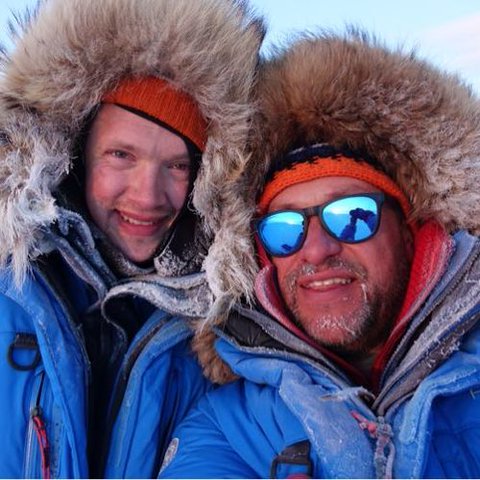TORONTO – In a tragic turn of events, it appears that two Arctic researchers have succumbed to the very phenomenon they had set out to explore: melting Arctic sea ice.

Two Dutch scientists, Marc Cornelissen and Philip De Roo, were reported missing on April 30 by the company sponsoring their expedition, Cold Facts.
On Friday, the RCMP issued a press release stating that the body of at least one of two missing Dutch polar explorers had been found on Thursday. They did not release the name.
The findings at the scene were consistent with both men perishing as a result of the accident,” the press release said. “The ice conditions at the location of the incident could best be described as very poor.
The explorers were taking part in a two-month expedition called the Last Ice Survey, an expedition chronicling the changing Arctic. As they reached the Arctic, they found what they were looking for: a place with warmer-than-normal temperatures.
READ MORE: 2015 Arctic sea ice extent lowest on record
“In the end it was me skiing in my underwear only — and my boots, of course,” said Cornelissen in an audio report on April 28. He was off the coast of Bathurst Island. “And it’s very good that you guys don’t have a picture of this… And it didn’t feel sexy either. But it was the way to deal with the heat.”
In the same report, Cornelissen also reported that he believed he could see more thin ice in front of them, “which is quite interesting.”
Two days later, the Cold Facts team — which headed the expedition — reported that the pair was missing. A day before, the Dutch base camp had received an emergency message from the team.
A plane was dispatched from Resolute, Nunavut, and arrived at the location, but was unable to land because of the open water conditions. There was no trace of Cornelissen or de Roo, just their dog, Kimnik, who was found alive next to a sled and a “big hole in the ice.”
It was presumed that the pair had drowned after falling through thin ice.
The RCMP initiated a search-and-rescue operation, with a helicopter flying over the area. The dog was still found to be in the same location, but this time two sleds were found, one partly unpacked. The second was in open water.
Recovery operations were dispatched and Kimnik was rescued. Aside from being a bit hungry, she was found to be in good condition.
The tragic circumstances illustrate the concerning issues of the Arctic: the region continues to warm at twice the rate of anywhere else on the planet.
According to the National Snow and Ice Data Center (NSIDC), the sea ice extent in April was the second lowest on record. But it’s not only about sea ice extent: the Arctic sea ice is getting thinner.
“Right now the ice is a bit thicker than it was last year, but it’s still thinner than it was in the ’80s and ’90s,” said Julienne Stroeve, research scientist at NSDIC.
Stroeve said that, typically, the average thickness is about two metres, but it used to be closer to four metres.
The region did experience warmer-than-normal temperatures, something that could have caused some melt.
On April 24, Cornelissen reported seeing slush and water coming up between the ice and snow. He also recorded something referred to as “Arctic sea smoke” in the distance, which indicates an area of open water.
On April 28, the last day Cold Facts heard from the pair, the temperature in the area was about five degrees warmer than normal.
READ MORE: Global warming: The changing face of the Arctic
“All the things we see right now –the Artic warming and the sea ice reduction and the increase melting of Greenland — it all paints this coherent picture of big change going on in the Arctic,” said Stroeve.
And it’s not just about what’s happening in that region of the world.
“All of these things are connected, and by changing one part of our climate system, the rest of the system is going to respond,” Stroeve said.



Comments